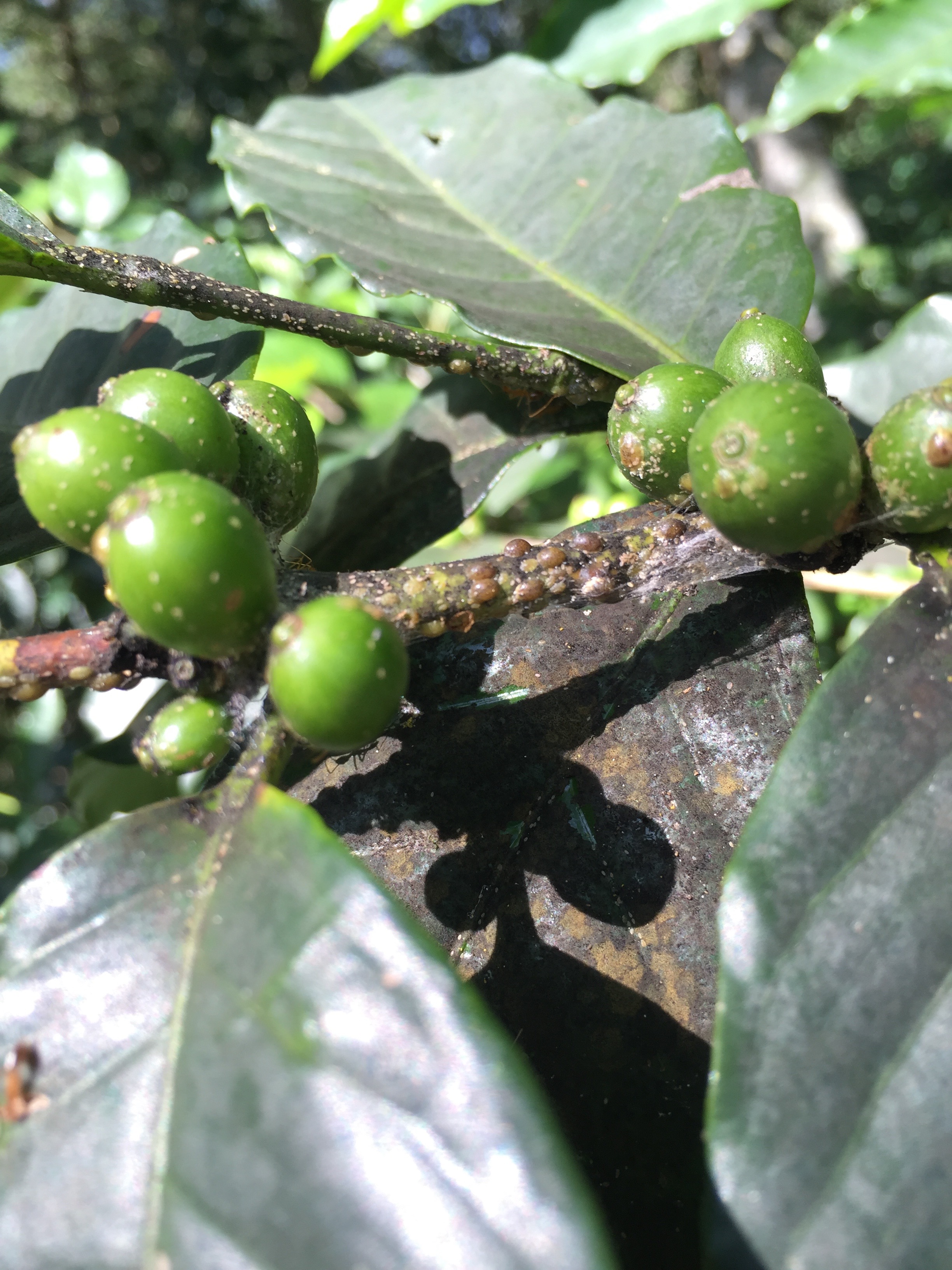Coccus Viridis -Green Coffee Scale Disease
Green Coffee Scale (Coccus viridis) is the triple-threat of coffee diseases. Scales suck the plant sap and excretes a sweet (honeydew) like substance. Then sooty mould (a black, loose, sooty-like cover) often develops all over the trees because it can feed on the sweet excretion.
There are a number of natural predators of Green Coffee Scale such as wasps, ladybugs and Verticillium fungus. However, the sweet excretion attracts ants that keep these natural predators away. Therefore Green Coffee Scale doesn’t just give farmers the inconvenience of their presence but they bring mold and ants with them. Farmers are quickly bombarded with all these symptoms as well as a yellow and bare tree.
Farmers then have to decide how to solve these problems all at once which could be daunting and confusing. If a farmer can realize that the Scale may cause all of these symptoms but it is the ants who keep the natural predators of the Scale away, then they can simply and successfully treat the ant-problem and watch the Green Coffee Scale’s natural predators come and take care of the problem for them. If they do not realize the complexity of the situation, they could end up spending more time and money on remedies that don’t work as good.
Additionally, keeping added expenses down will ensure that the farmer is profitable, sustainable and able to expand. There are two cost effective ways in which farmers can control this coffee plant disease. The first is that it can be controlled with chemicals at quickly and at ease, however the farmer will not only spend money from their already very tight budget, but he/she will also kill off any other insects that are natural predators to the Green Coffee Scale as well as predators of other vulnerabilities to the coffee tree such as the Mealy bugs.
The second cost effective way is to control the ants with sticky glue around the trunk of the tree which is available in many countries but under different names like diatomaceous earth and lime wash, amongst many other traditional remedies which might already be used locally.
The Arabica coffee manual for Lao-PDR recommends a natural method of tobacco spray to kill Green Coffee Scale. I have also personally very successfully used the remaining leaves of the soaked tobacco around fruit trees to keep ants away.
Here's their recipe: 1 kg strong tobacco per 2 L water. Soak for 2 nights. Then remove tobacco. Add 500g of washing powder and make up to 20L. Spray weekly until scales disappear.*
*Arabica coffee manual for Lao-PDR
Authors :Edward Winston, Jacques Op de Laak , Tony Marsh, Herbert Lempke and Keith Chapman








